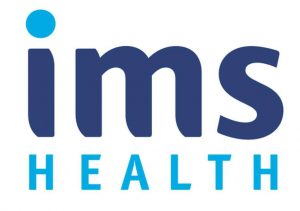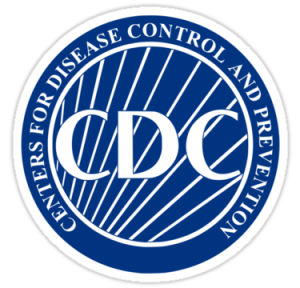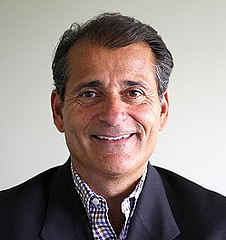2017 Trends: Rising Drug Costs
The cost of prescription drugs has been rising rapidly since 2010, and will likely continue to rise in 2017.
Frank Magliochetti
The largest drug maker in the United States, Pfizer Inc., raised prices on 133 of its U.S. brand name products in 2015. More than three-quarters of the increases were 10 percent  or more. Daraprim, the antiparasitic commonly used to treat toxoplasmosis, went from $13.50 to $750 per pill overnight in September of 2015. The price of Epipens skyrocketed 500 percent, rising from $97 in 2007 to $600 in 2016 for a two-pack set of the emergency treatment for anaphylaxis.
or more. Daraprim, the antiparasitic commonly used to treat toxoplasmosis, went from $13.50 to $750 per pill overnight in September of 2015. The price of Epipens skyrocketed 500 percent, rising from $97 in 2007 to $600 in 2016 for a two-pack set of the emergency treatment for anaphylaxis.
The total net spending on prescription drugs has grown to $309.5 billion annually, according to IMS Health, including discounts, within the past year. This makes prescription drugs the fastest growing segment of the nation’s healthcare economy. At 12.2 percent, 2014 spending on drugs dwarfs the overall  growth rate of healthcare spending and the rate of spending growth on physician and hospital care. The price of drugs, rather than utilization, is the predominant driving factor in this increased drug spending.
growth rate of healthcare spending and the rate of spending growth on physician and hospital care. The price of drugs, rather than utilization, is the predominant driving factor in this increased drug spending.
Spending on drugs rose 8.5 percent in 2015 but total prescriptions dispensed increased by a mere 1 percent. The pharmaceutical price inflation was 7.2 percent in 2015, according to the Bureau of Labor Statistics (BLS) Producer Price Index (PPI), significantly outpacing both general inflation and medical inflation at 0.7 percent and 2.7 percent, respectively.
2017 Trends towards Higher Prices
2017 will probably see more increases in drug prices, and the rises costs will likely have a significant effect on consumers and healthcare providers. Price hikes will likely affect employees and young retirees in 2017. The results of Segal’s 2017 Health Plan Cost Trend Survey suggest prescription drug costs will rise 11.6 percent in 2017 for active employees and retirees under the age of 65, on top of 11.3 percent in 2016.
That is a huge leap for most Americans. More than 48 percent of all people living in the U.S. report taking at least one prescription drug in the previous month, according to statistics provided by the Centers for Disease Control and Prevention (CDC), and more than 20 percent of Americans use three or more prescription medications. Health plan cost trends have slowed, according to the Segal survey, but they continue to outpace average wage increases and inflation by more than three time.
taking at least one prescription drug in the previous month, according to statistics provided by the Centers for Disease Control and Prevention (CDC), and more than 20 percent of Americans use three or more prescription medications. Health plan cost trends have slowed, according to the Segal survey, but they continue to outpace average wage increases and inflation by more than three time.
Patients carry an increasingly heavy financial burden when it comes to drug costs, and so do hospitals faced with difficult decisions regarding the allocation of scarce resources. Inpatient drug spending rose 23.4 percent on average, according to a report by theAmerican Hospital Association (AHA), and 38.6 percent per individual hospital admission. The report details the experience of one hospital that reported that last year’s price increases for just four common drugs were equivalent to the annual salaries of 55 full-time nurses there. Drug prices will likely continue to rise in unpredictable ways while reimbursement amounts from payors will probably increase only a small amount. Hospitals will continue the struggle of balancing resources in response to changes in the drug market.
The rise in specialty drug/biotech medications will be especially high in 2017 at 18.7 percent. While specialty drugs make up less than 1 percent of all medications, the 100 insurance providers responding to the Segal’s survey said that specialty drugs now account for 35 percent of total projected prescription drug cost increases for the next year.
Source
http://www.bls.gov/ppi/ppidr201512.pdf
https://www.segalco.com/media/2716/me-trend-survey-2017.pdf
http://www.aha.org/content/16/aha-fah-rx-report.pdf
http://www.cdc.gov/nchs/fastats/drug-use-therapeutic.htm
Frank Magliochetti is Managing Partner for Parcae Capital.
-
North Andover, Massachusetts
This column of posts is directed at the Healthcare Industry. Frank plans to release new sites dedicated to the industry – . He currently assists companies who are building, restructuring, transforming and resurrecting there business’s. An example of his client base are, Xenetic Biosciences , IPC Medical Corp, Just Fellowship Corp, Environmental Services Inc., Parsons Post House LLC, ClickStream Corporation as well as having a business talk radio show; The Business Architect on the URBN network.







